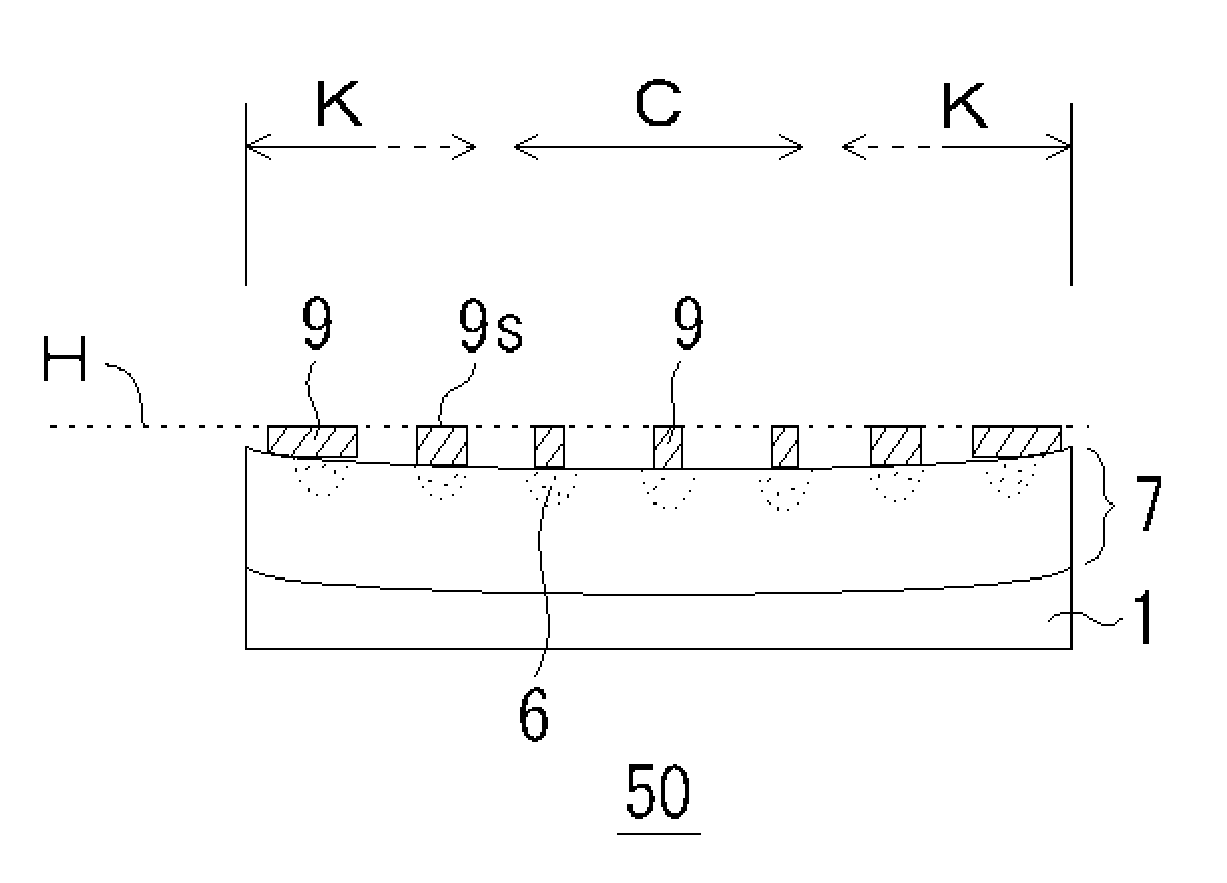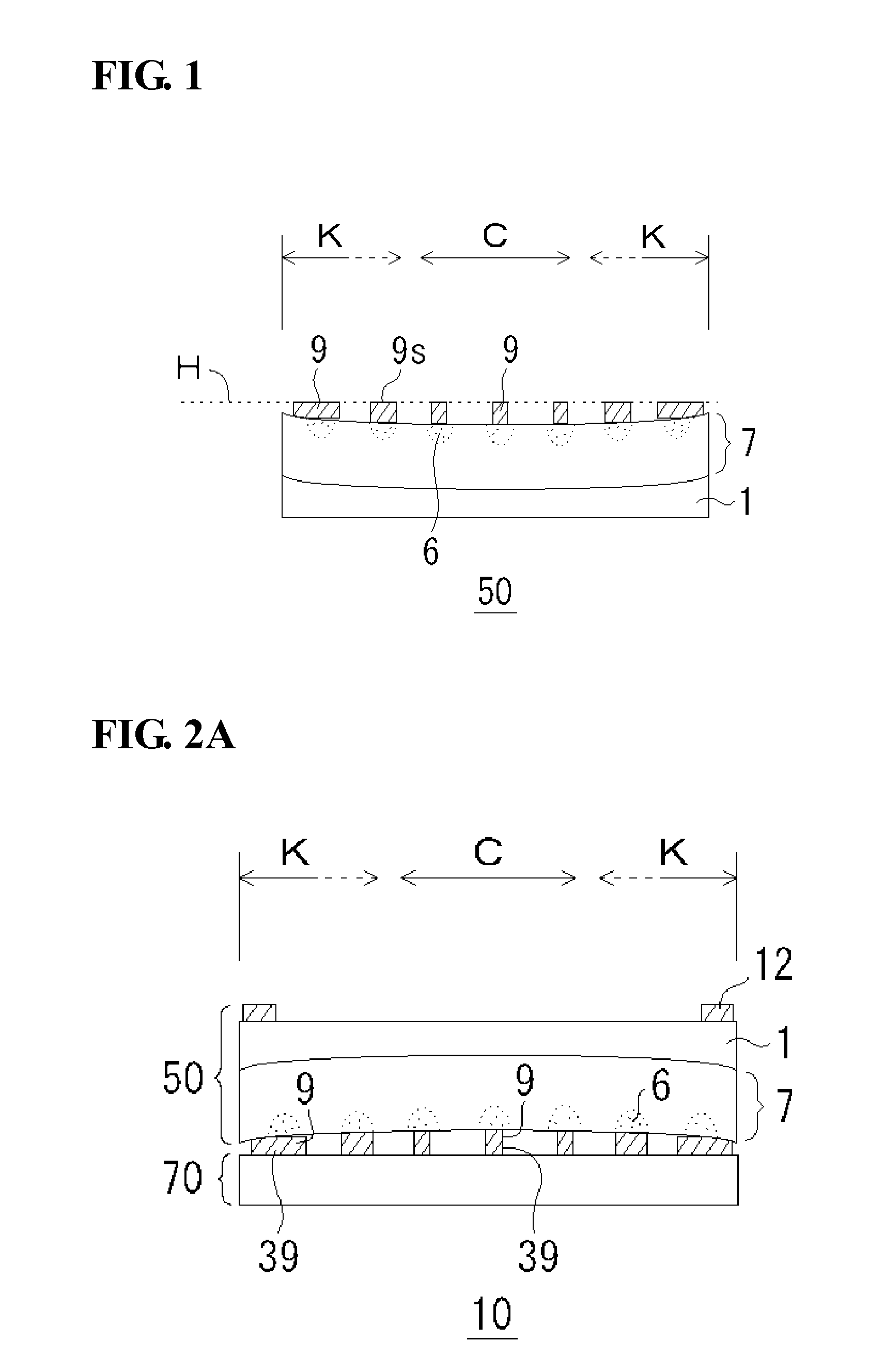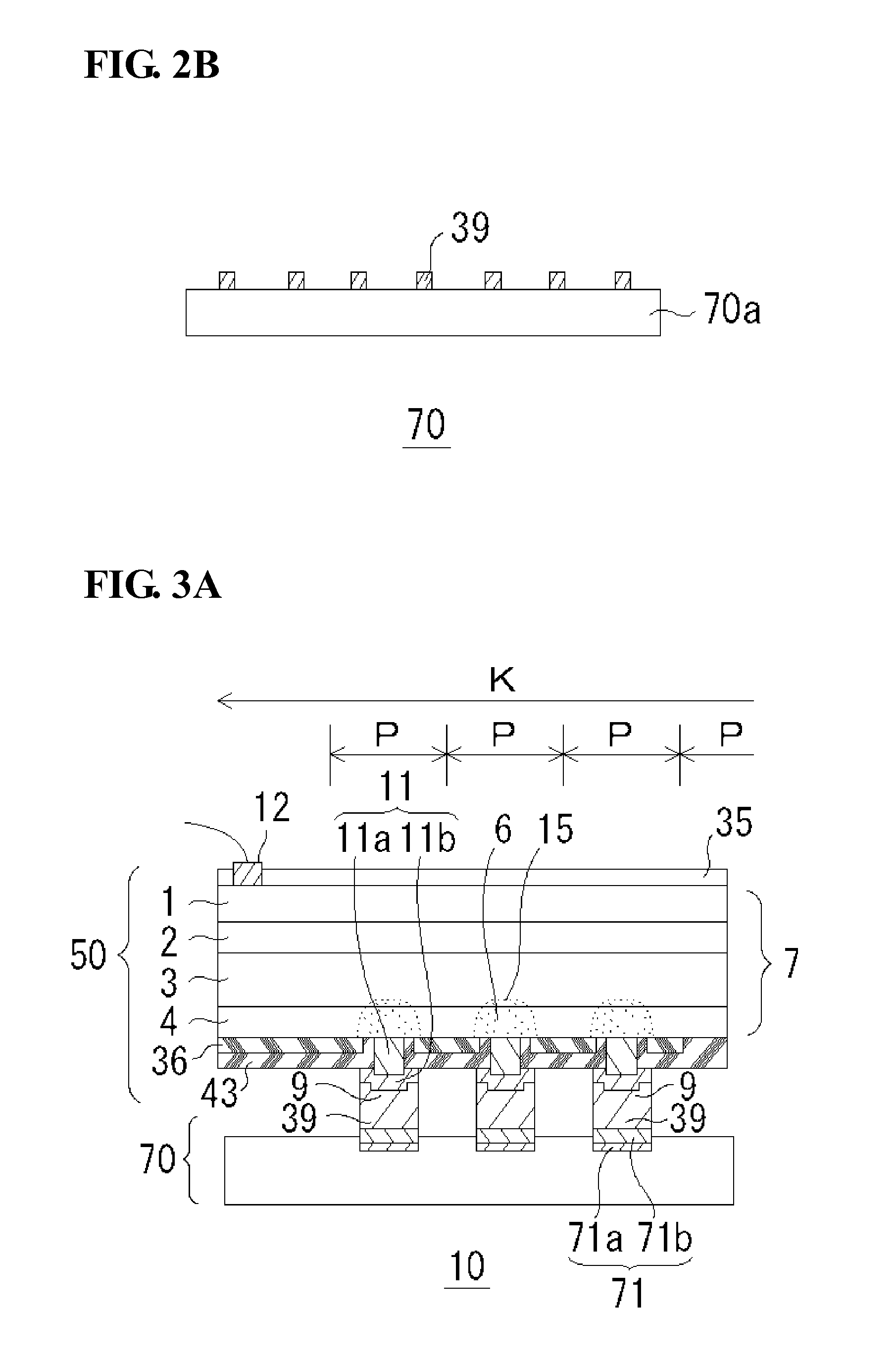Detection device, light-receiving element array, semiconductor chip, method for manufacturing the same, and optical sensor apparatus
- Summary
- Abstract
- Description
- Claims
- Application Information
AI Technical Summary
Benefits of technology
Problems solved by technology
Method used
Image
Examples
first embodiment
[0072]FIG. 1 is a drawing showing a light-receiving element array (sensor chip) 50 according to a first embodiment of the present invention. The light-receiving element array 50 includes an InP substrate 1 and an InP-based epitaxial stacked structure 7 formed on the InP substrate 1 and containing an absorption layer (not shown). In addition, p-type regions 6 are separately formed by selective diffusion of zinc (Zn) as p-type impurity from the surface of the InP epitaxial stacked structure 7. Each of the p-type regions serves as a core of a pixel. Further, a pixel electrode (p-side electrode) not shown is formed to make ohmic contact in each of the p-type regions 6, and bumps 9 are formed on the respective pixel electrodes. The characteristics of the light-receiving element array 50 according to this embodiment are as follows.
[0073](1) The epitaxial stacked structure 7 has an upwardly (outwardly) concaved surface.
[0074](2) The bumps 9 in a region K near the periphery have a larger di...
second embodiment
[0113]FIGS. 13A and 13B are drawings each showing a read-out integrated circuit 70 formed on silicon according to a second embodiment of the present invention. FIG. 13A is a drawing showing the case where the surface is entirely concavely warped in a bowl-like shape, and FIG. 13B is a drawing showing the case where the entire warp is eliminated to restore flatness. In both FIGS. 13A and 13B, the CMOS 70 includes a CMOS body 70a provided with read-out electrodes (not shown) and bumps 39 provided on the read-out electrodes.
[0114]In FIGS. 13A, the top surfaces 39s of the bumps 39 are arranged at the same height. On the other hand, in FIG. 13B, the height of the top surfaces 39s of the bumps 39 in the central region C are higher than the top surfaces 39s of the bumps 39 in the region K near the periphery (positioned away from the surface of the CMOS body 70a). This results from springback (restoration).
[0115]However, both cases are common in the point that the bumps 39 in the region K n...
third embodiment
[0119]FIG. 16 is a drawing showing a detection device 10 according to a third embodiment of the present invention. This embodiment is characterized by using the light-receiving element array 50 of the first embodiment (refer to FIG. 1) and the CMOS 70 of the second embodiment (refer to FIG. 13A or 13B). That is, in the detection device 10 shown in FIG. 16, both the light-receiving element array 50 and the CMOS 70 have concaved surfaces which face each other. In addition, the bumps 9, 39 in the region K near the periphery have a larger diameter and a shorter length than the bonded bumps 9, 39 in the central region C. In more detail, the bonded bumps 9, 39 are increased in diameter and decreased in length from the center to the periphery with some variation, but strictly not in a linear manner. The bonded bumps 9, 39 have the above-described biased configuration. In particular, in this embodiment, the bumps 9 and 39 of both the light-receiving element array 50 and the CMOS 70 have the...
PUM
 Login to View More
Login to View More Abstract
Description
Claims
Application Information
 Login to View More
Login to View More - R&D
- Intellectual Property
- Life Sciences
- Materials
- Tech Scout
- Unparalleled Data Quality
- Higher Quality Content
- 60% Fewer Hallucinations
Browse by: Latest US Patents, China's latest patents, Technical Efficacy Thesaurus, Application Domain, Technology Topic, Popular Technical Reports.
© 2025 PatSnap. All rights reserved.Legal|Privacy policy|Modern Slavery Act Transparency Statement|Sitemap|About US| Contact US: help@patsnap.com



